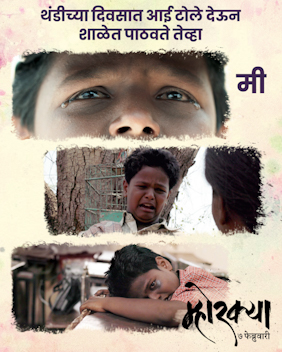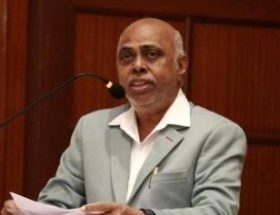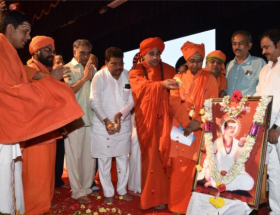Bhagyashri Boywad
“Mhorkya” is a movie that revolves around the question of leadership in a School Parade. Marathi movies are always known for addressing various social issues. The Marathi word “Mhorkya” translates to “Leader.” The film is set in rural Maharashtra, specifically in the Solapur district, Barshi, where a distinct Marathi dialect is prevalent.
The main character of the movie is Ashya, a shepherd. His father incurred a debt from the dominant caste Sahukar in their village and subsequently passed away, leaving Ashya in bonded labor to the Sahukar. Ashya has a deep affection for his goats and sheep, often spending time with them in nature. His family consists of his speech impaired mother, his elderly and ailing grandmother, and his favorite goat, Katrina. His mother and grandmother support his dream of becoming a parade commander, offering hope for a better future.
The movie delves deeply into the social aspects of Ashya’s life. He belongs to a lower caste, and his friends share a similar background, including a Muslim friend. His mother works as a landless laborer on farms, and his grandmother’s health is fragile due to old age. Ashya bears the responsibility of providing for his family, illustrating the theme of leadership in the face of adversity. Marginalized students like Ashya often shoulder the burden of supporting their families from a young age, as demonstrated by his efforts to clear his father’s debt.
Ashya’s friendship with Gomtar Aba and Annya highlights the movie’s exploration of friendship. Annya, a socially ostracized individual, is a former Kargil soldier who imparts valuable lessons to Ashya about being a parade commander.
Gomtar Aba, also a shepherd, demonstrates kindness and support for Ashya, often caring for his cattle. The origin of Gomtar’s name, derived from “Gantantra” meaning republic, is explored, showcasing the politics of naming.
The movie portrays unemployed lower-middle-class youth in semi-urban rural areas who resort to watching pornographic content in the absence of other entertainment options. It also touches upon the themes of masculinity and boredom, with these young men engaging in local politicians’ rallies as a pastime. The village chowk, farms, and open spaces become their venues for leisure, effectively depicting the concept of “time pass” and boredom.
Cultural aspects of the movie are evident through Ashya’s grandmother, a Jogini who participates in local cultural programs to support her family. The movie also hints at the Potraj tradition, prevalent among Dalit Hindus, where the eldest son’s hair is not cut. The interactions between Ashya and Gomtar Aba, despite their age difference, showcase the cultural fabric of their community. Religious symbols, such as the Shani Mandir, portraits of Babasaheb, and Shivaji Maharaj, and a statue of a Shahid soldier, offer insights into the cinematic representation of society.
The political dimension of the movie becomes apparent when local politicians host a flag ceremony at the school, and teachers aim to impress the politician with their parade preparations. This highlights the influence of local politicians on schools in rural areas, where they often hold considerable influence. The film also underscores how political influence can lead to generational political careers, starting with school-level connections. Ashya’s lack of social, cultural, and political capital hinders his talent from receiving support, whereas a student from the dominant caste with influential connections is favored.
The movie delves into the pedagogical aspect when school teachers attempt to bring Ashya back to school. Unfortunately, some students resort to violence, threatening him and forcing him to comply. They subject him to a purification ritual by making him take a bath outside the school handpump, mocking him in the process. Inside the classroom, the teacher and the entire class mock Ashya for his irregular attendance and exam answers. This portrayal echoes the discrimination faced by Dalit and lower-caste students in the classroom, emphasizing the need for inclusive education as a means of emancipation for marginalized students.
Initially, Ashya dislikes attending school, but his dream of becoming a parade commander on Republic Day motivates him to change his ways. He begins attending school regularly, maintaining his uniform, and even acquiring new school shoes. However, on Republic Day, his dream is shattered, and he flees the school rally holding a portrait of Sant Gadge Baba, who dedicated his life to cleaning villages. The film highlights how marginalized individuals’ contributions often go unnoticed, overshadowed by dominant structures and figures.
In conclusion, “Mhorkya” is a interesting movie that explores various dimensions of society, culture, politics, and education through the life of its protagonist, Ashya. It sheds light on the challenges faced by marginalized individuals and the resilience required to pursue their dreams.
Image courtesy Wikipedia.
You can read the Marathi version here.
~~~










